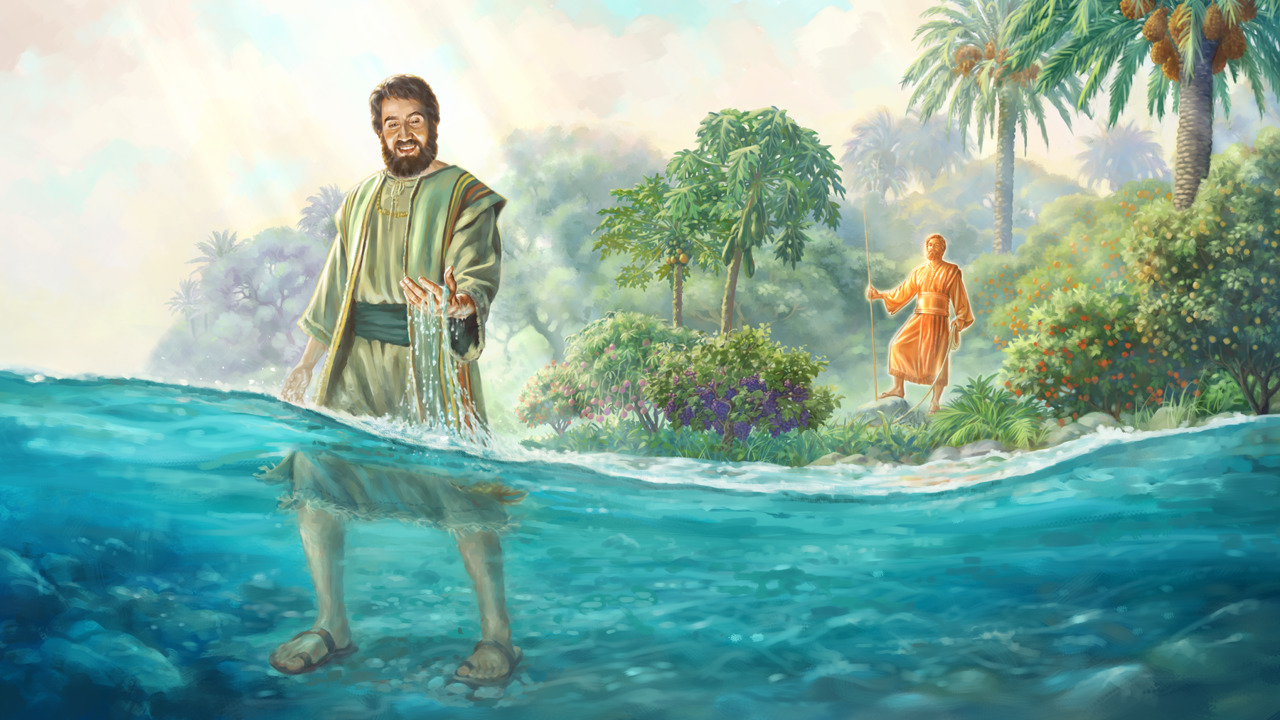
Nov. 9, 2022 – Ezekiel 47:1-2, 8-9, 12; Ps. 45; 1 Corinthians 3:9c-11, 16- 17; John 2:13-22
The first reading is from the prophet Ezekiel and describes a beautiful image
of fresh water flowing out of the Temple in Jerusalem and bringing new life and fertility wherever it flows: “Wherever the river flows, it will revive every kind of creature that can multiply, and there will be fish in abundance, for where this water comes, the sea will be healed.” And again, “along the two banks of the river shall grow fruit trees of every kind; their leaves shall not wither, nor shall their fruit fail…”
It is an image of the Temple in Jerusalem as the source of life for all. In today’s celebration, this description points to the life that comes to the world through the communities that gather in a church like St. John Lateran and in all our cathedrals and parishes. Again, it is not the building that is the source of life, but the community that gathers there.
In the Gospel of John we find the episode in which Jesus purifies the Temple. The synoptics report this event just before the Passion, while John puts it much earlier, just after the wedding miracle at Cana.
We are told that Jesus had gone up to Jerusalem from Galilee because the Passover feast was near. As he entered the Temple area, he found people selling oxen, sheep and doves to the pilgrims to offer as sacrifices. There were also money changers because Roman currency could not be used in the Temple and had to be exchanged for Jewish shekels. The unjust business practices of the merchants and money changers, encouraged by the Temple authorities, activities that had turned a place of prayer into a noisy marketplace infuriated Jesus who, made a whip of ropes, drove out the animals and money changers, quoting the prophet Zechariah, “Do not make my Father’s house a marketplace!” (Zechariah 14:21).
For good workers…
In celebrating today’s feast, we are called to focus more on the kind of Temple we form than on the building, however important and beautiful it may be. In the beginning, there were no churches and people met in various homes to celebrate the Eucharist. Church buildings became necessary because of the growing number of worshippers. If St. John Lateran, St. Peter’s and all the Churches in the world collapsed, the true Temple of God would continue to exist in us.
Today the Church celebrates the anniversary of the dedication of the Mother Church of Rome by Pope Sylvester I (314-335 AD) in 324 AD. Most people probably think that St. Peter’s Basilica is the Pope’s main church in Rome. But in fact it is the Church of St. John Lateran that is the cathedral and thus the Pope’s church as Bishop of the Diocese of Rome and, therefore, is called the “mother and head of all the Churches of Rome and the world.” The basilica and baptistery were originally built by Emperor Constantine and called Basilica Constantinia. It was later renamed the Arch-Basilica of the Most Holy Savior. Today, however, it is called Basilica of St. John Lateran because it was built on land donated to the Church by the Lateran family, and because the monks of the monastery of St. John the Baptist and St. John the Divine served there. The name St. John derives, first, from the Baptistery, rebuilt after Visigothic rule (410 A.D.), by Pope St. Sixtus II (432-440 A.D.), and dedicated by him to St. John the Baptist. Later, Pope St. Hilary (461-468 AD), dedicated it to St. John the Evangelist, in thanks to that apostle for saving his life.
P Joby Kavungal RCJ
TREZZANO SUL NAVIGLIO – MILAN

